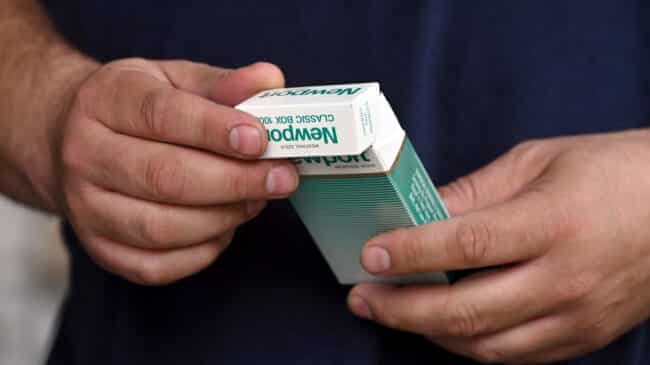The Family Smoking Prevention and Tobacco Control Act (TCA) of 2009 outlawed the manufacture, distribution, and sale of cigarettes with “characterizing flavors” other than menthol. Supporters of the TCA claimed cigarettes flavored like candy, fruit, and clove disproportionately appeal to minors, facilitating smoking initiation and dependence. As a result of the TCA, regulating tobacco products was, for the first time, put under the purview of the Food and Drug Administration (FDA).
Partly the result of an extraordinary alliance between Philip Morris and the Campaign for Tobacco-Free Kids, the TCA erected enormous regulatory barriers to introducing new tobacco products. Raising costs for competitors and banning flavors while exempting menthol cigarettes mainly appeased Philip Morris, the only tobacco company in favor of the bill. Tobacco control activists viewed the exemption of menthol as a missed opportunity and have long sought to convince the FDA to ban menthol cigarettes outright. The Biden administration is now intent on delivering this policy. When the TCA was being considered, the president of the Campaign for Tobacco-Free Kids (CTFK), Matthew Myers, explained why he opposed banning menthol cigarettes.“If you immediately withdrew a product, so many people use and are addicted to, you can’t say for certain what the reaction will be,” said Myers, who went on to warn that such a ban could lead to illegal trafficking.
Section 907 of the TCA authorizes the FDA to establish a product standard requiring tobacco manufacturers to eliminate menthol from their products if it is “appropriate for the protection of public health.”
To meet these criteria, the FDA must consider:
- The risks and benefits to the population as a whole, including users and non-users of tobacco products;
- The increased or decreased likelihood that existing users of tobacco products will stop using such products; and
- The increased or decreased likelihood that those who do not use tobacco products will start using such products.
To address these considerations, the Tobacco Products Scientific Advisory Committee (TPSAC), a creation of the TCA, was charged with reviewing the scientific evidence regarding menthol and recommending future regulation to the FDA. In 2011, the TPSAC published its review of menthol cigarettes, concluding that they have a negative effect on public health.
A separate review by the FDA published in 2013 found: “Menthol in cigarettes is likely associated with increased initiation and progression to regular use of cigarette smoking.” However, FDA’s evaluation found “little evidence to suggest that menthol cigarettes are more or less toxic or contribute to more disease risk to the user than nonmenthol cigarettes.”
Considering menthol cigarettes are not more dangerous than nonmenthols when it comes to their toxicological makeup, FDA must demonstrate why these products are deserving of prohibition compared to nonmenthol cigarettes, which are responsible for most smoking-related deaths and disease in the United States.
On April 22, 2022, the FDA announced it would pursue a ban on the sale of menthol cigarettes. The announcement came as new data from the 2021 National Youth Tobacco Survey (NYTS) revealed the current smoking rate among middle and high school students at a record low of 1.5%. Of those students who smoke, the majority, 61%, use nonmenthol cigarettes.
Nevertheless, claims made against menthol should be considered and reviewed to see if critics’ claims are borne out in the real world. Suppose the association between menthol cigarettes, increased youth initiation, and dependence is as strong as tobacco control activists suggest. In that case, there should be signs of it in the national data.
Employing National Survey on Drug Use and Health (NSDUH) data from the Substance Abuse and Mental Health Services Administration (SAMHSA) and industry distribution figures, Reason Foundation examined whether there was a strong positive relationship between the distribution of menthol cigarettes and youth cigarette smoking. The data covered all 50 states and Washington, D.C., for 2008–2020.
The resulting analysis found:
- States with more menthol cigarette consumption relative to all cigarettes have lower rates of child smoking;
- States with higher per capita distribution levels of cigarettes of all types have higher rates of both adult and child smoking;
- In general, the metric analyses show consistent nonpredictive relationships between relative menthol cigarette consumption rates and use of any age group; and,
- The only predictive relationship is between adult and child smoking rates, and since we do not expect children to cause their parents to smoke, we conclude that states with higher rates of adult cigarette smoking cause higher rates of youth use.
The data demonstrate that menthol cigarette distribution does not increase youth smoking initiation any more than regular cigarette distribution.
This study concludes that menthol cigarette availability does not pose a greater threat to public health than regular cigarette availability.
From these findings, we can infer that the best way to lower the youth smoking rate is to reduce the adult smoking rate in concurrence with the public health literature. But any consideration of menthol prohibition should be made in the context of extremely low youth use of the product, the lack of association between menthol use rates in states and youth smoking, the costs of enforcing prohibition, especially for minority communities, and other less costly ways of reducing smoking, such as increasing the availability of safer nicotine alternatives like e-cigarettes and traditional smoking cessation services.


